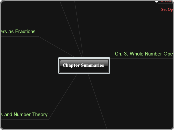Chapter Summaries
Ch. 2: Numeration and System Sets
Numeration Systems
Ancient Systems
Different Bases
Describing Sets
Set Operations and Properties
Ch. 3: Whole Number Operations
Addition and Subtraction of Whole Numbers
Algorithms for Addition and Subtraction
Multiplication and Division of Whole Numbers
Algorithms for Multiplication and Division
Mental Math and Estimation
Ch. 4: Algebraic Thinking
Variables
Equations
Functions
Function as machines
Functions as equations
Ch. 1: Problem Solving
Four Step Problem-Solving Process
Patterns
Geometric Sequences
Arithmetic Sequences
Fibonacci Sequence
Ch. 6: Rational Numbers as Fractions
Set of Rational Numbers
Equal Fractions
Simplifying Fractions
Ordering Rational Numbers
Addition and Subtraction of Rational Numbers
Ch. 5: Integers and Number Theory
Addition and Subtraction of Integers
Chip Model
Number line Model
Absolute Value
Multiplication and Division of Integers
Chip Model
Number line Model
Order of Operations
Divisibility
Divisibility Tests
Prime and Composite Numbers
Prime factorization
Determining if Prime
Greatest Common Factor and Least Common Multiple
Clock and Modular Arithmetic
